Promontory
Some weeks ago I was asked by the German quarterly journal Texte zur Kunst to contribute to their upcoming summer issue, loosely organized under the grandiose rubric of “theses on contemporary art,” whose aim would be not so much to define art, but to allow for the staking out of certain positions, which seemed especially important given the confusion resulting from the current “crisis” in the global economy. (The question as to what may happen “after the crisis” had been addressed in the journal’s most recent issue.1) After all, the editors of Texte zur Kunst rightfully suggest, “the financial crisis brought the hitherto conjured boom of ‘contemporary art’ to a preliminary halt; one can often hear these days that content (finally?) will once again become more important than market success. But what are those contents?”2
My response to their invitation was hurriedly written down—not carelessly, mind you, but simply out of a sense of urgency: this was an important question! The piece for Texte zur Kunst followed up on some thoughts first articulated in a previous essay written for e-flux journal, “The Way of the Shovel: On the Archeological Imaginary in Art,” which ended with a lament concerning contemporary art’s inability “to grasp or even look at the present, much less to excavate the future.”3 This prompted the invitation, on the part of the editors of e-flux journal, to further speculate on the possible outcome of such an “excavation of the future,” something I had already started doing in the text for TZK, which in turn became the point of departure for the current reflection, an expanded version of an essay titled, tellingly, “On the Impossibility of Theses, And Why That Is A Bad Thing.” Dig, Lazarus, Dig.


Back to the Futurists
Just over a hundred years ago, on February 20, 1909, the Futurist Manifesto was published in Le Figaro. In addition to making many rather more dubious claims, it declares that “we are on the extreme promontory of the centuries! What is the use of looking behind at the moment when we must open the mysterious shutters of the impossible?”4 The author of these glowing, muscular lines, Filippo Tommaso Marinetti, also infamously likened museums to cemeteries:
Museums, cemeteries! Truly identical in their sinister juxtaposition of bodies that do not know each other. Public dormitories where you sleep side by side for ever with beings you hate or do not know. Reciprocal ferocity of the painters and sculptors who murder each other in the same museum with blows of line and color. To make a visit once a year, as one goes to see the graves of our dead once a year, that we could allow! We can even imagine placing flowers once a year at the feet of the Gioconda! But to take our sadness, our fragile courage and our anxiety to the museum every day, that we cannot admit! … Indeed daily visits to museums, libraries and academies (those cemeteries of wasted effort, calvaries of crucified dreams, registers of false starts!) is for artists what prolonged supervision by the parents is for intelligent young men, drunk with their own talent and ambition.5
How genuinely out of sync these pronouncements now sound, at a time when there seems to be such great longing, precisely among young artists—no longer just men, obviously—drunk with talent and ambition, for the lethargic, anesthetizing comfort of the museum; at a time when artists frequent these very same cemeteries in such droves and with such unmitigated passion that the use of the word “necrophilia” seems in order! Indeed, even Institutional Critique as a “genre” or “ism” in its own right, which may at first appear sympathetic to the Futurist rhetoric of iconoclastic subversion, ultimately only speaks of love for the museum—of the desire to belong to the museum. (Why has there been so bitterly little “institutional critique” of the institution of the art market? I guess institutional critics have to live too.)
In “The Way of the Shovel” I couched this diagnosis in the critical terms of a “historiographic turn in art” apparent in the obsession with archiving, forgetfulness, memoirs and memorials, nostalgia, oblivion, re-enactment, remembrance, reminiscence, retrospection—in short, with the past—that seems to drive much of the work done by some of the best (and most highly regarded) artists active today, from Gerard Byrne and Tacita Dean, via Felix Gmelin and Joachim Koester, to Goshka Macuga and Deimantas Narkevicius. This has mostly been a good thing, and has also produced much exquisite art; I too am a history nut who often prefers dwelling on the past—not just that of art, obviously—than truly living in the now.
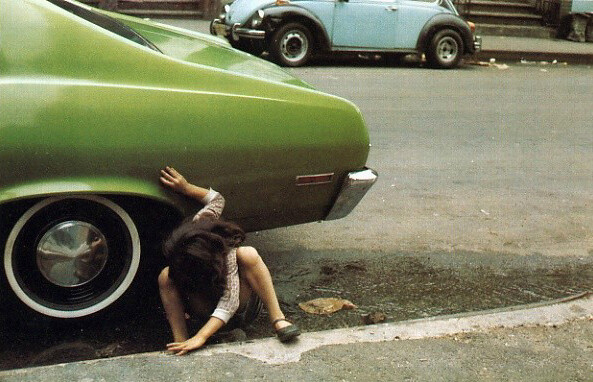

For, in truth, and this is perhaps more to the point, there haven’t been too many good reasons to fully and optimistically engage with either the present or the future in the last half decade or so: the historiographic turn in art, which of course has been under way much longer than that, really took on the shape of a fully-fledged trend or movement in art (what should we call it?) in the early years of the twenty-first century; in other words, it was in a sense inaugurated by the events of September 11, 2001, and the subsequent “war on terror” which has done so much to make the first decade of this century such a gloomy, depressing affair. This “new historicism” (is that what we should call it?) is really nothing other—like it or not—than the art of the Bush era.
Let us go back to 2003, for instance, a crucial year in more than one respect. Most of the previous year had been consumed by the global geopolitical obsession with a new “ideological” specter, this time haunting not just Europe, but the world in its entirety: terror. In March 2003, these globalized politics of fear culminated in the unlawful invasion of Iraq by the Bush administration’s so-called “coalition of the willing.” The obvious criminality of Operation Iraqi Freedom provoked the largest anti-war protest of all time to flood the streets of some 800 cities around the world on February 15, 2003, with the estimated number of protesters ranging from ten to thirty million. According to the BBC, “the demonstration in London was the biggest in the UK capital’s political history, with nearly two million taking part,” and according to the Guinness Book of World Records, the three million people who gathered in Rome made it the largest anti-war rally in history.6 I was in Mexico at the time, and participated in a demonstration in Mexico City with some 10,000 kindred souls—not much, for the world’s second largest city, I even thought to myself then.
Now we all remember, of course, that in the end this didn’t make the slightest difference: a little over four weeks later the first American bombs were dropped on Baghdad and the rest, as they say—very appropriately, in the present context—is history. The largest anti-war protest of all time proved miserably, pitifully powerless: no wonder that the remaining five years of the Bush presidency were characterized in the main by a deep-seated sense of resignation permeating all layers of (Western) society and (Western) cultural life, by “inner exile” (a historically fraught phrase), by escape and withdrawal into both intro- and retrospection, by depoliticization and hedonist apathy—this is the background against which the defining features of the contemporary art scene of the last eight years or so should be read: 1) the unprecedented boom of the art market as demonstrated by the seemingly ceaseless proliferation of galleries and art fairs around the world, as well as by the exponential growth in numbers of pages devoted to advertising in the world’s leading art magazines (e-flux itself is both part of and witness to this phenomenon); 2) the rewriting of recent art history to allow for the “invention” of such new paradigms as Romantic Conceptualism and the concomitant cultivation of a certain willed marginalism; and 3) the historiographic turn in art proper.7
If the current state of the art market is any indication, however, this era in art may effectively be drawing to a close along with the Bush era. Perhaps this may cause a massive U-turn, in art as elsewhere, back to the future. But what will such a reorientation look like? What is the present condition of art, after the onset of the crisis, and after the Bush era?
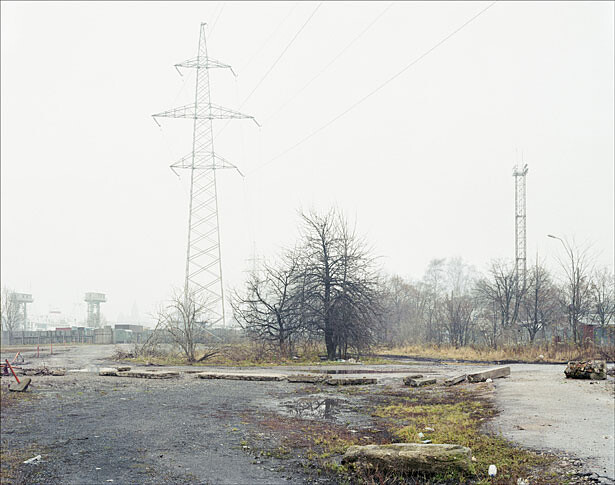

Current Findings (On the Present Condition)
Great artists, thinkers, and writers alike are well-known—in quite a few cases it has become the defining source of their greatness, and this is especially true of twentieth-century high culture and its constitutive cult of the maverick (remember McCain?), the renegade (remember Palin?), the refusenik (remember Clinton?)—for the scorn they invariably heap on the isms that were either named after their pioneering work, or which they helped to establish as isms as such: none of Dada’s original “leaders” wanted to have anything to do with “Dadaism”; Guy Debord notoriously rejected the possible existence of anything akin to “situationism”; the two most prominent minimalist composers of the twentieth century, Steve Reich and Philip Glass, vigorously contest any association with “minimalism”; Michel Foucault, finally, spent considerable amounts of his energy as a public intellectual publicly distancing himself from the very structuralisms and post-structuralisms of which he was later named a martyred patron saint.
Coming at the tail end of a century founded entirely on the secular myth of a charismatic, Nietzschean individualism (stretching all the way from John D. Rockefeller and Pablo Picasso to Matthew Barney and, indeed, Barack Obama), and whose most exemplary evils we are systematically taught to associate with the vagaries of the collective, with the perverted group psychology of mass movements (Nazi Germany, Stalin’s Soviet Union), the very notion of an “ism” now seems capable of inspiring the enthusiasm of only those second- and third-rate artists, thinkers, and writers deemed unfit to found an ism, movement, or school all their own: manning the oars of such isms is the exclusive task, not of leaders (first-rate artists, thinkers, and writers), but of the followers these leaders didn’t want in the first place.
Now, it goes without saying that modern art’s contribution to this ideologized dialectic of the “good” individual versus the “bad” crowd has proven singularly invaluable for the reigning liberal doctrine of heroic, entrepreneurial ingenuity (which wants “leaders not followers!”). And it certainly continues to do so well into this age of so-called “contemporary” art (contemporary with what, precisely?), a time when, paradoxically enough, there are probably more artists than ever before in the history of mankind (all jockeying for a claim to irreducible individuality, of course), and yet it has also never been harder to think of even the simplest ism beneath which one could potentially group together even the slightest fraction of this promiscuous overabundance of artistic activity.
But why would we attempt to dream up such an ism in the first place? Why would we even want an ism to channel and discipline the diffuse energies of artistic practice that effectively define the perceived or presumed wealth of contemporary art? Is it not exactly this promiscuity that is the sole dependable guarantor of fun? Indeed, it seems counterintuitive to desire the clarity and intellectual comfort afforded by a neat, orderly overview of schools, movements, and isms, especially within the field of contemporary art, which prides itself with such programmatic ardor on its structural resistance to hierarchical thinking, to reduction and systematization.
Again, it is precisely the lack of such an overview in art—let’s call it an instance of Jürgen Habermas’ neue Unübersichtlichkeit—or the impossibility of an Olympian viewpoint from which to self-confidently write the history of the present, that is supposedly constitutive of the tremendous riches of Art in the Present Tense; in this (now probably overly familiar) sense, contemporary art also reflects, more or less directly, the irreversible decentralization, fragmentation and intractability (in short, Unübersichtlichkeit) typical of the globalized world.8 I very consciously say and write “supposedly constitutive”—for who would actually assert that we truly live in a Golden Age of art making? Who really believes that mere, sheer numbers can rightfully be taken for wealth? Perhaps the self-indulgent rhetoric of die neue Unübersichtlichkeit has simply become an excuse for lazy thinking, for intellectual paralysis and timidity in the face of a phenomenon of overproduction that begs to be theorized in greater, totalizing historical terms—to be named, precisely, with an ism.
Perhaps the challenge of this process of theorizing and naming—to theorize and name the present state of art, rather than merrily applaud its excess and heterogeneity—is precisely what is needed right now, both in (and for) art and art theory. It seems perfectly legitimate—in fact, I would say it is simply urgent—to ask oneself the following question: what, ten or fifteen years from now, will art critics, historians, and theorists think or say when they look back upon the artistic climate of the noughties? What ism will be coined to describe the systemic confusion of the present moment; what tangle of schools and movements are we living through? This for me is our greatest question, the one that seriously needs to be addressed, and addressed with a new (type of) seriousness.
Because seriously: why has there been so much shit and why have there been no great isms in the last decade or so? Whatever the answers may turn out to be (and they may be rather more sobering than we’d like them to be), we are obviously in a position to help give them shape, merely by already starting to think about a possible ism ourselves: by starting to think, not just about the present, but also about the future again.
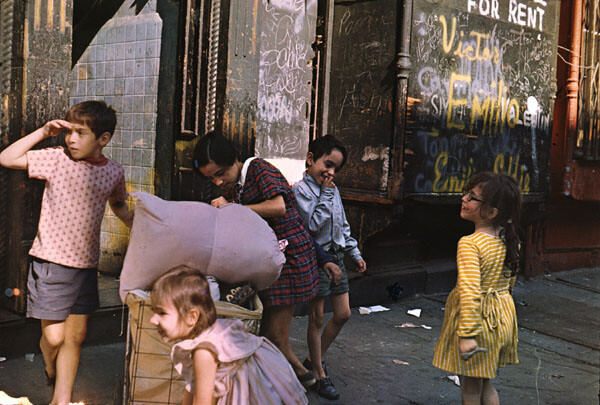

Inward, Outward, Backward: Fast Forward
When was the last time something akin to a “school,” organized around a body of purposefully articulated theses, emerged in the critical field of art practice as theory? Let us say that “Relational Aesthetics” perhaps defined such a moment (surely the aforementioned “Romantic Conceptualism” can’t possibly be qualified for the job): true to form, most of its leading practitioners either immediately or eventually refused the label and implied simplicity of belonging to a definite ism—luckily for us, with limited public success, though they do still name their exhibitions “anyplacewhatever.” Certainly, there have been minor attempts at art-historical crystallization since, but it is rather telling that most of these have been only literally historical—or should we simply say historicist?
We have already documented the historiographic turn in art, and this is not the place to expand on it in further, but there does certainly seem to exist a connection between, on the one hand, the reluctance to theorize the present moment in art (let alone its future), and, on the other, the massive amounts of art made today concerned with “yesterday”; our inability to either “think” or simply imagine the future seems structurally linked with the enthusiasm shared by so many artists for digging up various obscure odds and ends dating from a more or less remote, unknowable past—and the more unknowable the past in question, the deeper the pathological dimension of this melancholy, retrospective gaze. (One particularly potent genre in contemporary art—not an ism just yet—deals exclusively with the overlooked nooks and crannies of recent art history in particular: re-enactment, or historicism to the nth degree.)
As Danish artist Joachim Koester has remarked, “in the nineteenth century exploration was geographic. Journeys were made into impassable jungles or the ice deserts of the Arctic in an attempt to map the last “white” spots on the globe. But in the twentieth century this notion of the ‘unknown’ changed. Exploration turned inward. The new realms to be explored were the molecule (Niels Bohr), the unconscious (Sigmund Freud), language (Gertrud Stein) or the outskirts of the mind (Henri Michaux).”9 Now, Koester is of course well known for the acuity with which he himself has explored this double history of exploration, both outward and inward—his is an exploration, in other words, of the very idea of exploration as a historical achievement, and his best-known works are silent, 16mm films that reconsider the “discovery” of either the outer reaches of the inner self (Morning of the Magicians) or the very edge of the visible world (Message from André).
Koester’s high profile in contemporary art is founded on the substance and obvious intelligence of his retrospective gaze, which is anything but retrograde; but the high regard in which his work—that of a pioneer of the historiographic turn in art—is held has become living proof of a new, not entirely beneficial development that logically concludes his own aforementioned observation as follows: in the twenty-first century, exploration has turned backward—not outward, not inward, but plainly towards the past. Which is perhaps not as interesting an orientation for thinking about both the present and the future—arguably the more pressing concerns right now, I repeat—than we have been led to believe.
As I mentioned above, there have been many good reasons to indulge in the escapist fantasy of historiography, the most convincing probably being that the world has been a rather dismal, depressing place for the last decade or so. Accordingly, these last five years have given us both an awful lot of nostalgia-bound “historicist” art (so much of it simply awful “historicist” art), as well as a complete loss of perspective from which to view the art world as a historical whole that actively invites and needs our thinking the bigger picture. This thinking the bigger picture, with an eye on the possible production of the theory of the present and recovery (“excavation”) of the future, may well be one of contemporary art’s most inspiring challenges: to finally be able again to capture art in a handful of isms.
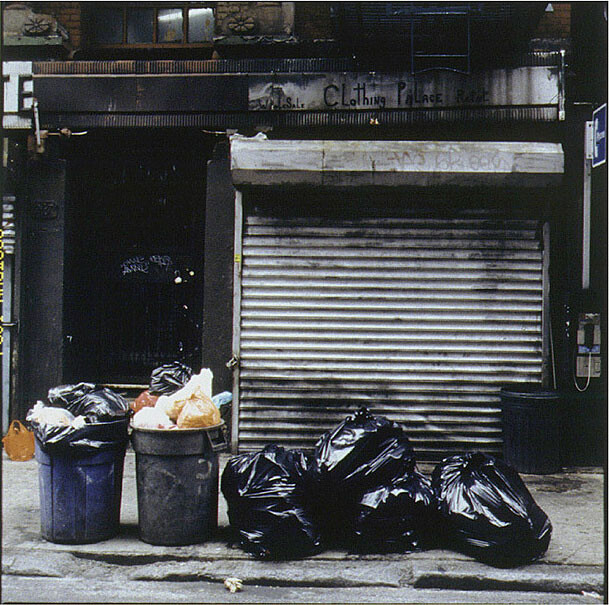

The Desire and Opportunity Named “Crisis”
Recovering the future with a view to producing a theory of the present (and turning our backs on the past): now is probably a great time to give it a try. “Now” of course meaning “after the crisis,” that already fully mythologized, pivotal moment in 2008 (when exactly? September 15? October 3? November 4?) that so many of us had so obviously been longing for all along; for it would be completely disingenuous to disavow the immense sense of relief (bordering on Schadenfreude) that the mere spectral possibility of an inglorious end to the long, dire years of excess has caused us to feel. One of the many hopes inspired by “the” crisis resides, precisely, in the real possibility that obscene levels of overproduction, saturation, and excess—the constituent factors of the aforementioned neue Unübersichtlichkeit which has become such a transparent pretext for boundless (self)indulgence—will finally grind to a halt, that soon enough we will finally be able to see clearly again.
Here—so the rhetoric goes—lies a tremendous opportunity to sweep up the trash (now that the carnival is over, etc.) and start thinking about what just happened, or just to simply start thinking anew, period. And for this, we will be needing the immodest proposals of true historical thinking on the grand scale of isms, movements, and schools—we will be needing both criticism and critique. As Isabelle Graw, Stefanie Kleefeld, and André Rottmann state in their preface to the most recent issue of Texte zur Kunst, ironically as well as dramatically dubbed “After the Crisis,” “if market conditions change, nothing less than a redefinition of the concept of art is up for debate. For this reason, every crisis is also a fine hour for criticism that productively discusses what ‘Art’ is to be understood as.”10 And this obviously is a matter of (re)imagining both the present and the future, a matter of trying to figure out what art is (present), might and must be (future)—all of which may eventually force us to look back upon recent and contemporary art history as instead frivolously, irresponsibly obsessed with the past.
Let us say that the search is on for the ism that most completely embodies and represents the now: what should its defining characteristics be, its basic tenets and guiding principles? Who will write its manifesto, almost exactly one hundred years after Marinetti cum suis? For only the manifesto can speak clearly and confidently at this point (after all, we are no longer living in an age of “endless conclusions”); this even the impostors of Dogme 95 half-jokingly grasped. And beyond that: what would an excavation of the future yield, and what would such an excavation site even look like?
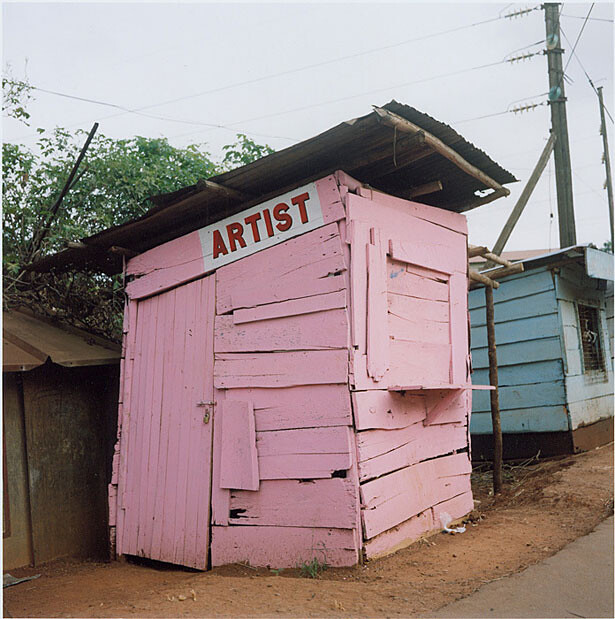

A Real Realism
Crises, it is well known, breed realisms: realism proper (that of the original nineteenth-century variety), socialist realism, Walker Evans’, Dorothea Lange’s and Diego Rivera’s realism (which reminds me: this pamphlet should probably have been dedicated to Helen Levitt, who passed away last month), capitalist realism, critical realism, and photorealism, they all belong to defining moments of economic, political, social, and cultural crisis—with every crisis producing that “fine hour for criticism” which may lead us to “productively discuss what ‘Art’ is to be understood as,” as Graw, Kleefeld, and Rottmann put it.
The above provisional list of past realisms, however, shows that (apart from Roberto Bolaño’s “visceral realism,” but that’s another story) there has hardly been any realism in art and culture for over three decades now—probably because there have not been real crises, at least not really real ones, until now. Whether conceived of as 1) “a practical understanding and acceptance of the actual nature of the world, rather than an idealized or romantic view of it,” 2) “lifelike representation, in artistic and artistic works, of people and the world, without any idealization,” 3) “the theory that things such as universals, moral facts, and theoretical scientific entities exist independently of people’s thoughts and perceptions,” 4) “the theory that although there is an objectively existing world, not dependent on our minds, people are able to understand aspects of that world through perception,” or 5) ”the theory that every declarative statement is either true or false, regardless of whether this can be verified,” these (online) dictionary definitions help explain why there has been no real realism of late: there simply has not been terribly much engagement with something akin to a “real” (i.e., actually, really shared) world in recent times.11
We have already argued why this has not been the case—that the real world just wasn’t very hospitable, and inhabiting it wasn’t very rewarding either. But it is clear that this may now finally change, or may perhaps have changed already—how clearly we have heard the clarion call of “change!” resound through the global political landscape—and a reinvention of (rather than mere return to) realism in art may possibly result from it. But this will require the heroic effort of a new (and this time really real) seriousness.
Texte zur Kunst 73 (2009).
André Rottmann, e-mail message to author, October 31, 2009.
Dieter Roelstraete, “The Way of the Shovel: On the Archeological Imaginary in Art,” e-flux journal, no. 4 (March 2009).
Filippo Tommaso Marinetti, “The Futurist Manifesto,” reprinted in Fascism, Anti-fascism, and the Resistance in Italy: 1919 to the Present, ed. Stanislao G. Pugliese (Lanham, MD: Rowman & Littlefield, 2004), 27.
Ibid., 28.
I have written elsewhere about the historical convergence of a revived interest in sentiment and sincerity in contemporary art on the one hand, and the post-ironic revival of an ethic of “family values” in the Bush era on the other. See my “Emotion Picture Theory,” AS 173 (2005), and “Great Transformations: On the Spiritual in Art, Again,” Afterall 20 (2008). Many artists active in the field of historiography have also been associated with Romantic Conceptualism; the rehabilitation of many unsung heroes or overlooked and otherwise marginalized Einzelgänger from the recent past has been wholly central to both enterprises, and has resulted in the hero worship of a new cultural figure: the loser as an essentially decent, honest man in the vein of Bush’s own “average Joe” or “regular guy” persona. See also Oliver Stone’s recent re-reading of contemporary American politics in W (2008).
The reference here is to a slim volume of political writings (Kleine politische Schriften) published by Habermas in 1985; it has remained untranslated to this day, but has mistakenly been referred to as “the new confusion”: the untranslatable “Unübersichtlichkeit” is something very different from “confusion,” suggesting something close to “unsurveyability.”
Quoted in Anselm Franke and Hila Peleg, “The Soul, or, Much Trouble in the Transportation of Souls,” in Manifesta 7: Index, ed. Rana Dasgupta, Stephen Haswell Todd, Dan Kidner (Milan: Silvana Editoriale, 2008), 122.
Isabelle Graw, Stefanie Kleefeld, and André Rottmann, “Preface,” trans. Karl Hoffmann, Texte zur Kunst 73 (2009): 122. Their editorial concludes: “It is once again criticism, which under these conditions must lend sense and meaning to the products and make them more credible… . The precariousness of the entire art system, which is based on the assessment of value that is not seen in the object itself, and for this reason is built on sand, is now evident to all. We are neither happy, nor do we lament the state of affairs. We instead seek to reflect upon it” (ibid., emphasis added). I, however, am perfectly happy to admit that I am happy with this state of affairs—and one reason for this is suggested by my decision to italicize what I believe to be the crucial fragment in the passage quoted above. The authors of these lines may not have meant to insinuate this, but the implication here is clearly that it is time to revert (or, better still, move onwards) to a system for assessing the value of art as something that is in essence seen in the object itself. One of the challenges lying ahead for criticism, then, may well be located in drawing the outlines of such a system, or in providing its basic methodological and epistemological moorings. This is arguably an exercise in ontology, which I should like to expand upon in a future essay, countering the charge that we live in “post-ontological times.”
Encarta World English Dictionary [North American Edition], s.v. “Realism,” → (accessed April 25, 2009).
Category
Acknowledgments: thanks to Jason Dodge for sharing some of his ideas with some of my ideas; thanks to Monika Szewczyk for sharing all her ideas with all my ideas.

